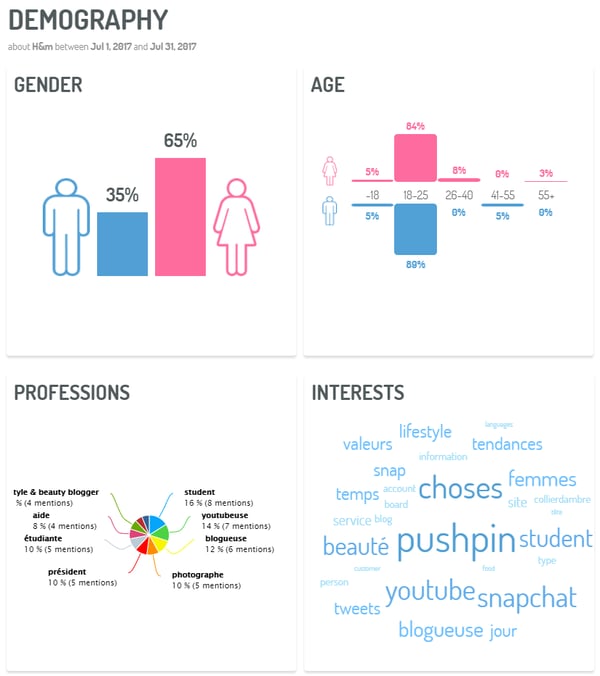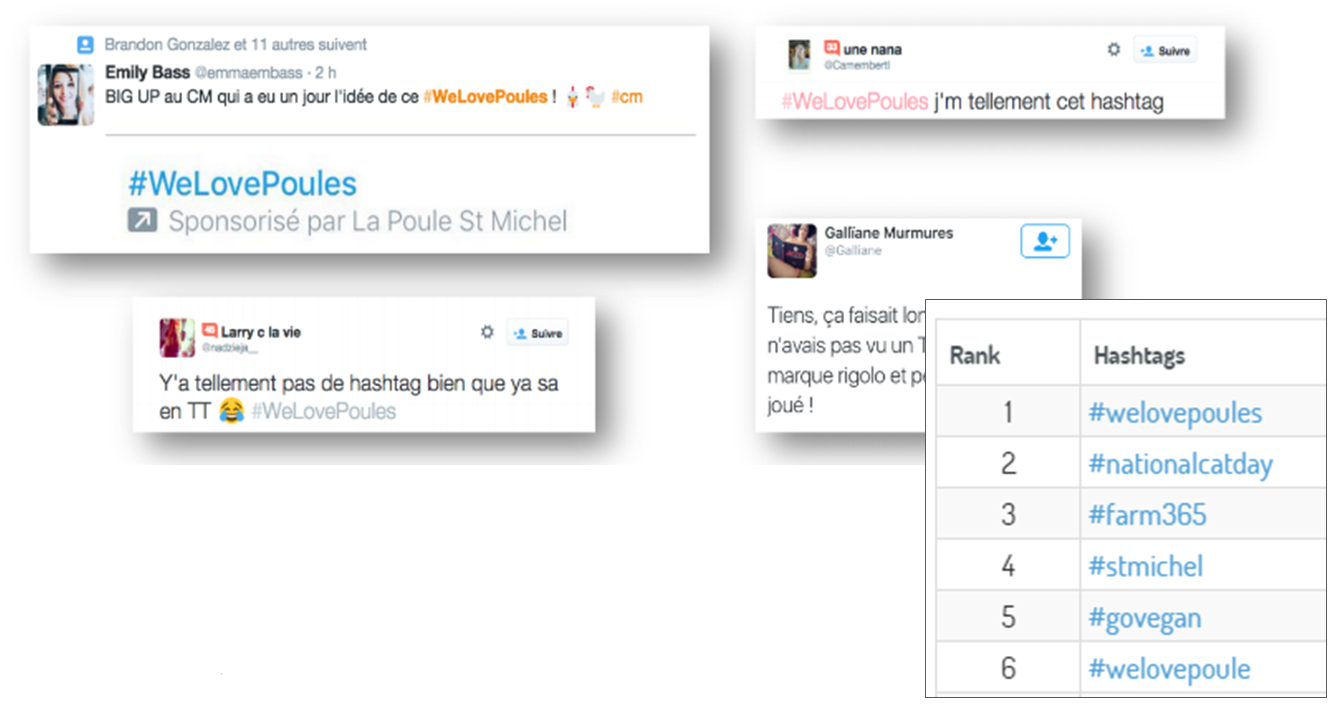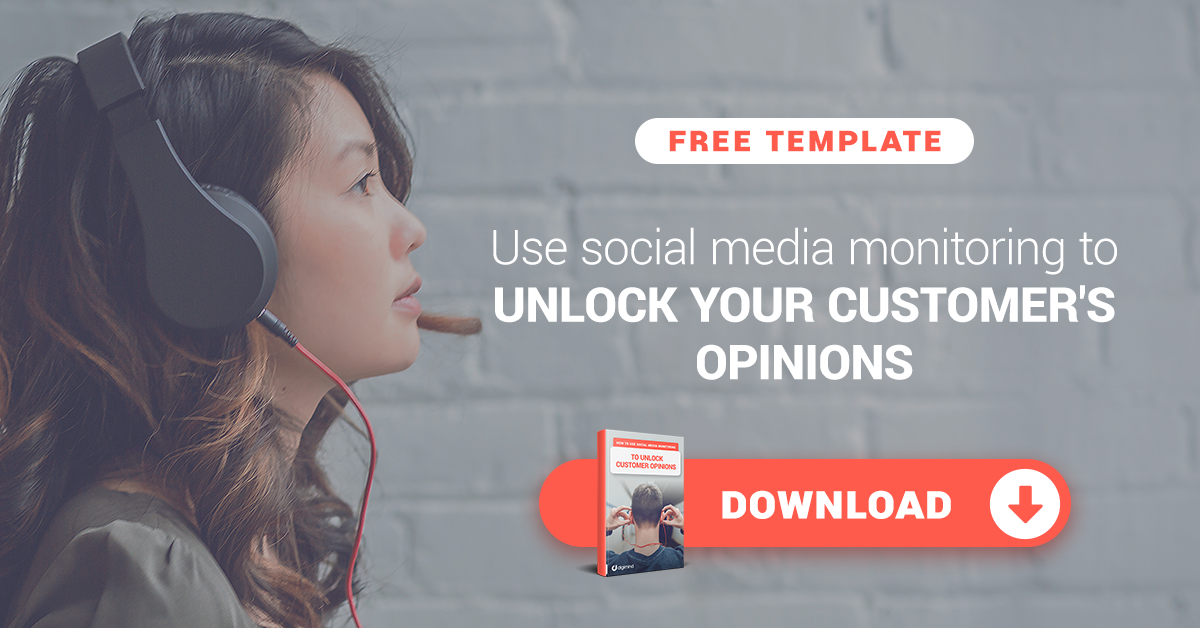How Brands Can Analyze Hashtags to Better Target Customers
August 23, 2017 marked a very special anniversary in the history of digital media: the tenth birthday of Twitter’s famous hashtags. In the decade they’ve been around, hashtags have become a cultural phenomenon and a cross-platform icon of social media. More than 125 million are tweeted every day, as advertisers, agencies, and publishers have integrated them into their strategies.
Most importantly for marketers, hashtag-based social media reporting has become an invaluable source of insight for brands looking to track the actions of influencers, keep up with their customers, and report on campaigns.
In the following client case studies, we’ll see how two brands used hashtags to understand and better target their audiences—and measure the impact of their communication efforts.
Understanding The Target Audience
One of our clients, Clique Media Group, uses hashtag analysis to understand its audience and provide insights to sales and digital communication teams.
The Company
Clique Media Group (CMG) produces lifestyle content for women. The group manages four sites: Who What Wear, dedicated to fashion trends, lifestyles, and celebrity; My Domain, targeting lifestyles for millennial women; Byrdie, a site devoted to beauty and cosmetics; and their new publication, Obsessee, only available on social media networks. Clique Media Group has over 13 million unique visitors per month and 40 million fans on social media.
The challenge
Clique needed to understand their audience and their expectations across all four sites. With a target market that was massively active on social media, the insights Clique collected were invaluable to understanding their clientele.
The solution
Clique uses Social Media Monitoring to detect popular content and make performance benchmarks in owned media. In earned media, they listen to conversations to detect the tastes of users, their purchases, and their locations.
 Analysis of hashtags for WhoWhatWear, via Digimind Social.
Analysis of hashtags for WhoWhatWear, via Digimind Social.
With hashtag analysis, CMG can:
- Track the success of campaigns associated with its various sites. CMG followed the hashtag of the #MyWhoWhatWear campaign to understand what buyers were thinking through their posts and photos posted on social media. Using the tool’s "in-depth analysis," they could also follow other keywords related to clothing brands and accessories, since not all consumers used the official campaign hashtag. In addition, the tool detected unofficial hashtags associated with different sites and the "lifestyle" theme.
- Understand sales momentum. CMG developed its own clothing collection, Evergreen, for the Target chain of stores. Social media analysis, through hashtags and associated expressions, allowed them to see which collections generated the most reaction and to compare that with store sales. With that information, CMG was able to adapt their content, communication campaigns, and sales strategies.
- Measure the impact of influencers. Hashtag analysis also made it possible to measure the virality of influencers. In order to understand and detect which influencers generated the most commitment, the tool analyzed the network of influence of the WhoWhatWear website (which included more than 70 different bloggers) through the use of hashtags.
- Identify the consumer profile. Analyzing hashtags is only a first step. In order to collect insights on an audience for which little information is available, the analysis of demographic data is essential. With it, the brand could see users’ sex, age, interests, and professions.
 Demographic and psychographic analysis of hashtags, via Digimind Social.
Demographic and psychographic analysis of hashtags, via Digimind Social.
Social media analysis also makes it possible to better locate users. In the US, CMG was able to segment messages that conveyed the tastes and expectations of its users by states and even counties. This level of granularity is essential given the extent and disparities of the North American territory. With the information, CMG could differentiate the offer by region according to the tastes expressed on social media.
 Geographic analysis of hashtags, via Digimind Social.
Geographic analysis of hashtags, via Digimind Social.Results
- Understanding community expectations and tastes allowed CMG to identify the best performing content and replicate it for future campaigns.
- The Social Media analysis of conversations and hashtags helped clarify the differences between competitors and thus adapt the content.
- The analysis of beloved or criticized collections on social media made it possible to associate social data with commercial data, shedding light on the success or the failure of certain clothes and accessories.
Measuring the impact of campaigns through UGC analysis
1. The challenge
Another client, a communications agency, used hashtags to analyze User Generated Content (UGC). Leveraging UGC was an ideal way to hear consumers and prospects speaking freely about the brand, its products, and its communication campaigns. When messages convey a positive image, in accordance with the brand's DNA, these conversations are a real benefit. This agency paid close attention to UGC as they prepared a communication campaign around the launch of a new brand of cookie and biscuit.
2. The solution
The agency used social listening to collect, analyze, and relay UGC content, namely tweets and Facebook posts produced by users talking about the marketing operation. Often this content was accompanied by images and jokes. The social media listening tool allowed them to capture all the conversations related to the marketing campaign by targeting not just their specific hashtag, but related hashtags as well.
Furthermore, the social listening tool made it possible to listen in on the spontaneous, out-of-campaign conversations taking place in earned media about the product.
This type of data gathering, of course, is nothing without a relevant analysis. That’s why the Digimind tool makes it possible to segment the data collected according to the author's profiles (location, interest, influence) and according to the dominant feelings in their messages.
 Example hashtags from the campaign, via Digimind Social.
Example hashtags from the campaign, via Digimind Social.
Results
Using campaign hashtags and associated expressions, the agency was able to evaluate a reach of more than 4 million users on social networks. Negative messages on the brand were completely supplanted by the volume of positive UGC produced. Using social media listening, the agency had created value that wasn’t just large and measurable, but organic.
Written by Christine Carzo
Christine is the US Marketing Director at Digimind. She interested in writing and talking about all things related to Marketing and business strategy, especially finding ways to help businesses grow faster and become more intelligent.

